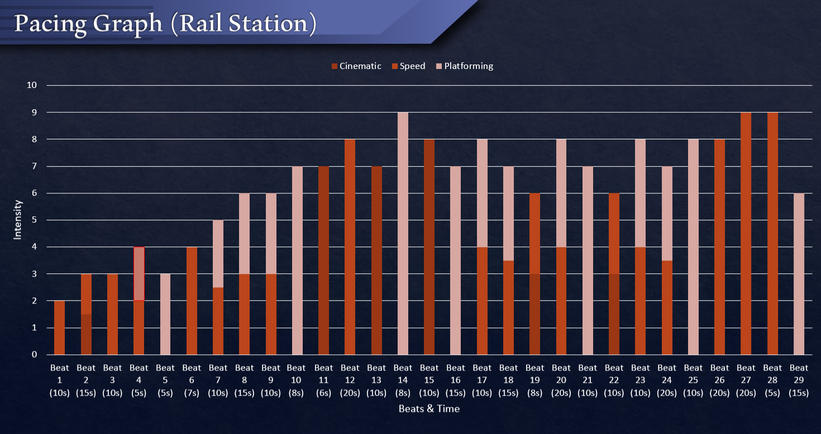top of page

Flipper Levels
Responsibilities
(Hover Over)
Understanding the source material's and other fan works' design conventions/goals, then comparing them to what's possible with the character controller.
Researching & Analysing
Using a glossary of terms and techniques (beat sheets, floor plans, bubble diagrams, etc) to plan in clear stages, and optimise the production workflow.
Professional Planning
Gathering quantitative data through telemetry and surveys to analyse and find problems, before iterating on the levels.
Data Analysis
Implementing all of the necessary gimmicks, features and interactions, like enemies, stage objects, and cinematic moments.
Scripting
Building on pre-production to create blockouts, then iterating to make better blockouts, then making geometry more believable in-universe.
Whiteboxing
Genre
Speed-Focussed Action Platformer
Duration
September 2022 - Present
The Project
High-speed action platforming levels based on Sonic the Hedgehog.
Altitude Limit takes place high in the skies, jumping between ships to reach the top.
Rail Canyon involves constantly grinding along rails, dodging trains, building up to a final chase.
The emphasis is on analysing the metrics of the controller and conventions of the sonic series, then iterating on the levels with data collection. Pre-production was enhanced with pacing graphs, floor plans, and a glossary of level design terminology.
Role(s)
Level Designer, using acquired assets. All 3D assets and copyrights belong to SEGA.
Team Size
1
The Background
The Flipper Framework was made for helping make Sonic the Hedgehog inspired levels, as such, some are included as examples.
Sonic Levels are based on blending speed & platforming, exploration, and a cinematic flair. Levels made for the Flipper Framework all highlight these, while also referencing sections in the original inspiration.
Several sources were used to aid pre-production, such as "the Level Design Book" and "LD - in Pursuit of Better Levels".
Details
A level designer, especially a junior, must always create environments in response to the game, and other disciplines. They do not originate the idea, but follow and help it, thus creativity should be used, but controlled. These levels allowed me to practice that, as I had to properly research conventions of Sonic design through the years- what they attempted and how they did it - then find new ways to innovate without disregarding that. As such, each feature was not something I originated, but I did twist it. For instance, rail switches were implemented based on Sonic Heroes, but used in new ways. This is similar to how Sonic X Shadow Generations levels twisted previous gimmicks.
Aligning with a game's goals, principles and vision
See the technical page for details here, but with the levels I frequently struggled with pacing due to struggling with how fast the player can move, despite their size. Too short makes things tedious and janky, while too big makes them feel lifeless. The biggest changes to Altitude Limit all came through frequent scaling changes. This led me to create my own dev room / metric gym, to get multiple metrics like distance covered at certain speeds, jump height, time in air. I later created rulers based on this, with calculators that take in a character's stats and output said metrics. These helped in pre-production planning, and production readjusting.
The value of metrics / knowing the controller
A huge part of Rail Canyon was its pre-production. I didn't want to go in blind, so along with the research into Sonic, and the Heroes' levels, I created a full level design glossary for terminology and pre-production tools. Terms/techniques include affordance, beats, breadcrumbing, composition, critical/golden paths, framing, gates, landmarks, saliency, signposts, teasing, teach/test/twist, vantage points, valves, visual language and weenies. Tools includes beat sheets, bubble diagrams, flow charts, goals (internal & external), metric gyms/zoos, pacing graphs and timelines.
Going from concept to final, with techniques, terms and tools
Lessons Learned
(Hover Over)

Pre-Production

Production

Post-Production
Gallery
Charles Django
bottom of page





















